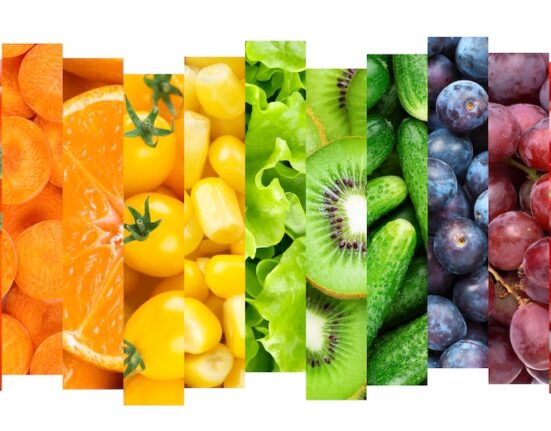A professional marketer since the early 1980s, Steven Muro learned how to master the tasks and strategies of brand promotion long before founding Fusion in 1997. The company is firmly entrenched in the produce industry, from which around 90% of its client base comes, and has worked with organizations including the California Strawberry Commission, Zespri, the National Watermelon Board, Divine Flavor, the California Avocado Commission and the Hass Avocado Board, among others.
Following senior corporate positions with L’Oreal and Wella, Muro is a master problem solver, a great communicator and easy-going with a quick and witty sense of humor.
“It’s important to learn the ‘ins and outs’ of both sales and marketing — two distinctly different skill sets. Sales is the more universally understood, so it’s important to understand that marketing is more than slapping a label on a package and claiming you have a brand,” says Muro, who is based in Ventura County, California.
The following interview has been edited for clarity and brevity.
You opened your company in 1997 — can you take us through its evolution?
Fusion started by me becoming a marketing consultant. About two years later, I added data and research and I would deliver this data to my customers. The clients then often asked me to deliver this research data to their various marketing agencies.
They wanted me to deliver the data, answer their questions and explain the implications, which led me to say to the clients, ‘I understand the information completely, wouldn’t it just be easier to have me do the other work too? It will be simpler, faster and less expensive.’ So, that’s how we became a full-service marketing agency, with staff for analytics, strategy, communications and creative.
You have a lot of experience with L’Oreal and Wella. How has that helped you in your work with produce companies and retail?
It is important to understand how different groups purchase produce products differently. How you position your products to these various groups is equally important. In other words, are you positioning your product for health and nutrition, flavor or something else?
Given the dynamic nature of the produce industry, how do you stay ahead of market trends and consumer preferences?
We practice what we preach. We take advantage of the lessons we offer our clients. We do research examining consumer actions, preferences and sales patterns. We watch for retail and foodservice innovation taking root. Then we utilize our analytical skills to uncover the finer details and those trends still in their infancy. Doing this on a regular and ongoing basis is key to moving and remaining ahead in the industry.
What are some key lessons you’ve learned from 25 years in business that could benefit newcomers to the produce industry?
Have a solid understanding of the entire supply chain. Be deeply rooted in how all the pieces work together. Understand that distribution is central to your sales success. Many new marketers focus on consumer advertising as a central tenet of their strategy, often overlooking distribution. Consumer advertising is considered “sexy” by many marketers, but remember: you can spend a fortune on advertising, but if the shopper can’t find your products on the shelf, you will have expended your resources without gaining sales. And consumer awareness is not a substitute for sales, it’s at best a precursor.
Can you give some examples of your greatest successes?
The avocado industry, which began when we worked with the California Avocado Commission in 1997—and they are still a client today. That is a real sense of pride for me and my team. On top of that, a few years later we began working with the Hass Avocado Board where we go very deep into research and analytics. They are literally the central repository for retail, consumer and nutrition research for the avocado industry. They are both terrific clients to work with.
Can you give me an example of your innovative solutions?
It’s different for every client, but I can tell you it’s a series of little wins that add up to a client’s success. I think our innovation solutions always go back to starting with a complete understanding of the client before initiating any strategies.
How is the integration of artificial intelligence and other technological innovations impacting marketing strategies for produce companies?
It’s not ready for prime time. It’s terrific for repetitive and organizational tasks including outlining a report or an article, but definitely not for completing those tasks. And certainly not for marketing strategies. But give it a few more years, and that will certainly change.
How have you seen marketing strategies in the produce industry evolve? What have been the key factors driving these changes?
This change, over time, has been dramatic. There was a time in produce when ‘marketing’ was the creation of a sell sheet and PowerPoint presentation for the sales staff. Today, we see fully developed strategies and campaigns with solid thought behind them.
There can be several forces behind this progress but typically I find there are two main drivers. One is retailers or foodservice operators that insist their vendors bring information, marketing strategies and campaigns that help build sales.
The other driving force is suppliers that understand the value these services can provide to their retail and foodservice clients and look to become the category captains in the industry. This group can build these resources either through the onboarding of new staff members or more cost-effectively through a partnership with an agency that can provide services only when needed.
Looking forward, what major trends do you foresee in produce marketing, and how should companies prepare to adapt to these trends?
There is an evolving understanding that sales and marketing are interconnected but not the same skill set or profession. Many produce companies remain strictly sales-focused with dozens of salespeople supported by only one or two marketers. In produce, it is time for marketing to advance to the same status and relative size it has enjoyed in Consumer Packaged Goods companies.
Smart companies understand that marketing sets the table for the sales staff. They do this with branding, communications, research, information and messaging that resonate with retail buyers and their shopper base. This is the logical direction for the industry and will result in increased sales and a growing market share. And by the way, market share is an important baseline metric for determining the overall sales success of a company and its brands. These are just a few of the business building opportunities the produce industry can leverage in the years ahead.





